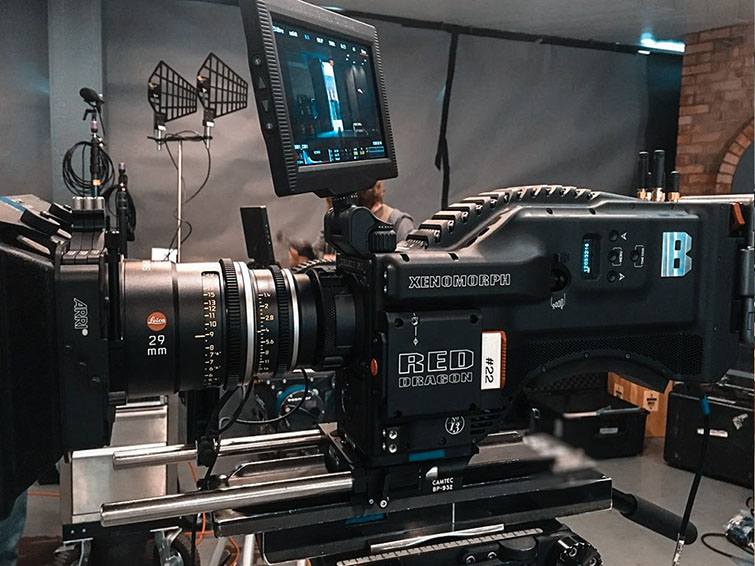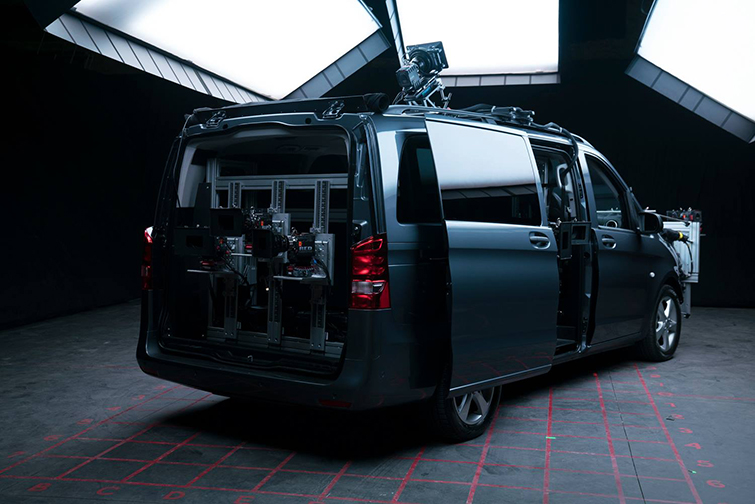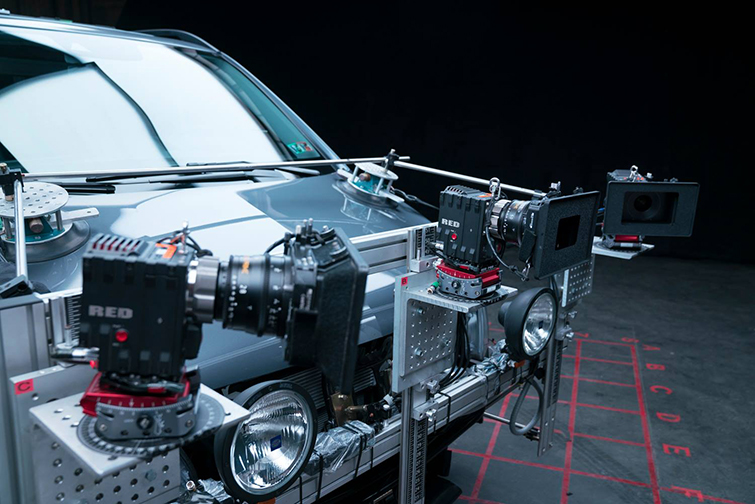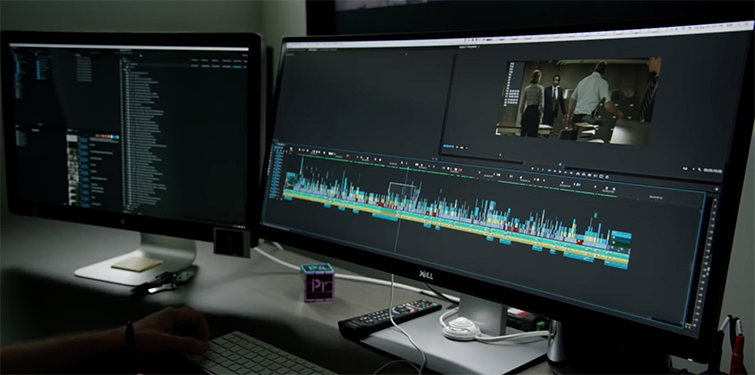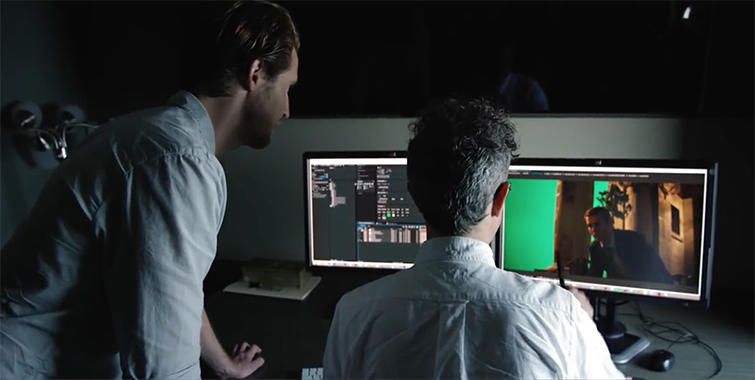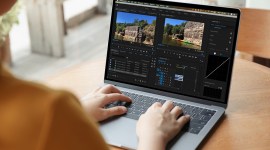
How David Fincher Shot and Edited Netflix’s “Mindhunter”
In which we explore everything from the brainstorming to the post-production behind Netflix’s acclaimed series “Mindhunter.”
Cover image via Netflix.
David Fincher, the director of films such as Gone Girl and Se7en, is one of the undisputed legends of dark thrillers. He first began his relationship with Netflix as the executive producer of House of Cards, one of the company’s flagship shows. In his new television release, Mindhunter, he explores the inner-workings of serial killers’ minds — and how the FBI began classifying these killers through interviews and studies. Let’s take a look at how Fincher brings his trademark visual aesthetics to life, from original concept to the final edit.
The Idea and Concept
Fincher has always always been fixated on creating dark stories about people who live even darker lives. In an interview with Esquire, he explains that he has always been fascinated with the sinister since he was a kid:
It’s interesting to me; I don’t know if it’s interesting to anyone else. There was always a house in any neighborhood that I ever lived in that all the kids on the street wondered, ‘What are those people up to?’ We sort of attach the sinister to the mundane in order to make things interesting. I think that there’s a tendency for the human mind to work that way. I think it’s also because in order for something to be evil, it almost has to cloak itself as something else.
This interest paved the way for his curiosity with the FBI and its beginnings. He explained to TIME that when the FBI started, there was so much new ground to cover in the criminal human psyche:
I was fascinated by the notion that at some point, [J. Edgar] Hoover’s creation — this monolithic, bureaucratic organization — had to say, ‘There are things going on that we just can’t properly articulate and don’t understand. How do we protect the innocent from it until we look at how it all works?’ And even if it started in the basement, even if it started in a way as the kind of voodoo department, they did it.
I also thought it was an intriguing that in order to truly understand one’s enemy, one had to develop even for short periods of time — even if they were faking it — empathy for people who heretofore would have been beneath our contempt. They had to figure out how to have human conversations with those who are subhuman.
Fincher took his interest and combined it with the bestselling book that inspired the show, Mind Hunter: Inside the FBI’s Elite Serial Crime Unit. Though he did take a good amount of creative license to make his show more dramatic, most of the source material stems from the book.
Production
For the cinematography, Fincher trusted Eric Messerschmidt to lead the team. Having previously been a gaffer on Gone Girl, this was Eric’s first time as a cinematographer, but thankfully he and Fincher saw eye-to-eye on their vision for the show:
David and I see the world in a similar way . . . I felt like I had a lot of freedom to try things visually and take some calculated risks. He was a huge supporter of that.
The production team for Mindhunter actually commissioned RED Cameras for a custom camera called the RED Xenomorph.
It is a RED Dragon camera with all of the attachments that a cinematographer needs inside the camera instead of hanging off the side. Messerschmidt explained to Variety how easy this new camera set up was to use:
‘Lately, we stick all sorts of aftermarket boxes on cameras: wireless video transmitters, timecode boxes, focus controls, motors, etc.,’ he says. ‘All of these boxes need cables and mounting hardware, and they turn an otherwise elegant camera into a big mess. David’s idea was “Hey, if we need all this stuff on the camera, why can’t it be built in?” That’s what RED did for us.’
If you are interested, here are all of the integrated specs the camera:
- RED Weapon Dragon 6K sensor technology
- 7.0″ LCD touch
- Paralinx wireless video
- Extended WiFi/Foolcontrol antenna array
- RT motion lens motor control
- Zaxcom wireless audio and timecode
- Anton Bauer gold mount
- Shoulder mount
- Xenomorph-inspired brain design
The crew also used RED to create a one-of-a-kind camera vehicle, outfitted with RED cameras in all possible directions to capture many of the road scenes inside Mindhunter.
The Editing Process
As you can see in the video above, the Mindhunter post-production team worked tirelessly to bring Fincher’s vision to life. The editors had almost the same dedication to their craft as the FBI workers presented in the show.
‘As editors, we are very similar to the FBI characters,’ says Byron Smith, one of the editors. ‘We are like investigators obsessing over footage to bring out the best in every detail to make each shot as enriched as possible.’
A crew of Fincher’s veteran editors from his previous movies comprised the editing team, including Tyler Nelson, one of the primary editors for this series. In this interview with Creative Planet Network, he explains his professional relationship with David Fincher:
I’ve been working with David Fincher for nearly 11 years, starting with The Curious Case of Benjamin Button. I started on that as an apprentice but was bumped up to an assistant editor midway through. There was actually another series in the works for HBO called Videosyncrasy that I was going to edit on but it didn’t make it to air. I cut the four episodes directed by Andrew Douglas (@andrewDdouglas) and Asif Kapadia (@asifkapadia), while Kirk Baxter [editor on Gone Girl, The Girl with the Dragon Tattoo, The Social Network] cut the four shows that David directed.
The editing team decided to use the Adobe suite for their editing workflow. Here is Tyler Nelson on why they chose Adobe Premiere:
Kirk and I have been using it for years. One of the editors, Byron Smith, came over from House of Cards, which was being cut on [Apple] Final Cut Pro 7, so that was an easy transition for him. We are all fans of Adobe’s approach to the entertainment industry and were on board with using it. In fact, we were running on beta software, which gave us the ability to offer feedback to Adobe on features that will hopefully make it into released products and benefit all Premiere users.
Since this was a typical Netflix Original show that would be released all at once, they had the unique opportunity to present a story not only as an episodic drama but also as a 10-hour feature film.
We were able to treat this like one long feature film. In essence, each episode is like a reel of a film. There are 10 episodes and each is 45 minutes to an hour long. We worked it as if it were an eight-and-a-half- to nine-hour long movie.
One major thing that improved the team’s workflow was bringing the VFX in-house to create a closed-loop style of editing. Since the VFX artist was using After Effects, the the Editorial and VFX teams could work seamlessly together through Adobe Creative Cloud. That way, if the editorial team needed some visual effects, they could send it to VFX, where they would have a turnaround time of a few hours — compared to a few days if they sent it to an external team.
‘It’s great to have a compositor right down the hall to bounce ideas off of, especially when we’re working within a tight timeline,’ says Tyler. ‘I could ask Christopher for his opinion, and know with confidence that any edit I made wouldn’t drastically impact someone else’s job downstream.’
The editors on this team learned a lot about cutting together the vision of a very well-known director while editing this show. Tyler Nelson describes it here best:
I’ve gotten an education each and every day. Lots of editors haven’t figured it out until well into a long career. I’ve learned a lot being closer to the creative process. I’ve worked with David Fincher for almost 11 years. You think you are ready to edit, but it’s still a challenge. Many folks don’t get an opportunity like this and I don’t take it lightly. Everything that I’ve learned working with David has given me the tools and I feel fortunate that the producers had the confidence in me to let me cut on this amazing show.
Overall, Mindhunter is a enthralling TV series that dives into a world of depravity, but it captivates the audience in a way that leaves them oddly empathetic with the serial killers they see on screen. Mindhunter is currently streaming on Netflix.
Looking for more on Netflix and filmmaking? Check out these articles:





